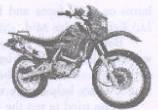 Nearly two million drivers in the UK have had accidents due to “Baby on Board” signs and children’s toys that affect their view, according to alarming new research. One in 20 motorists says stickers and playtime paraphernalia (装备) are to blame for a collision—equivalent to 1.85 million of Britain’s 37 million drivers. The discovery triggered a warning by a road safety charity—Brake to cut down on clutter (杂乱的东西) in the car.
Nearly two million drivers in the UK have had accidents due to “Baby on Board” signs and children’s toys that affect their view, according to alarming new research. One in 20 motorists says stickers and playtime paraphernalia (装备) are to blame for a collision—equivalent to 1.85 million of Britain’s 37 million drivers. The discovery triggered a warning by a road safety charity—Brake to cut down on clutter (杂乱的东西) in the car.
Deputy chief executive Julie Townsend said “Baby on Board” signs were very useful in alerting the emergency services that a child may be involved in case of a crash. “This help can become negative if drivers display signs when their child isn’t in the car,” she said. “Worse still is the danger that can be caused by drivers influencing their view by cluttering up (塞满) windows with lots of signs. Drivers’ priority should always be getting there safely without putting themselves, young passengers or other road users at risk.”
A survey arranged by price comparison website Confused.com found that 37 percent of parents have displayed signs and four out of five of them believe they improve safety. But 46 percent admit doing so at all times—regardless of whether or not their child is in the car—and 15 percent admit they only have them for their novelty value. The poll of 2,000 drivers also found that 46 percent of drivers regard them as a risk and 33 percent say they are lacking in taste.
“There are benefits and dangers to ‘Baby on Board’ signs. They can offer useful information for medical aid in case of a crash but having too many novelty items displayed could be a safety issue,” said a Confused.com spokesman.
32. What do we learn about the signs on the car from Paragraph 1?
A. They can be dangerous. B. They are useful to avoid accidents.
C. They are welcomed by passengers. D. They are forbidden to be used.
33. What is Julie Townsend’s attitude towards the signs?
A. Positive. B. Negative. C. Objective. D. Uninteresting.
34. According to the survey, most of the drivers who use the signs think that the signs_____.
A. are unnecessary B. can kill time
C. can make drivers clear D. can improve safety
35. What is the purpose of this text?
A. To solve a problem. B. To describe a threat to traffic safety.
C. To tell an interesting story. D. To persuade drivers to drive safely.
答案
ACDB

